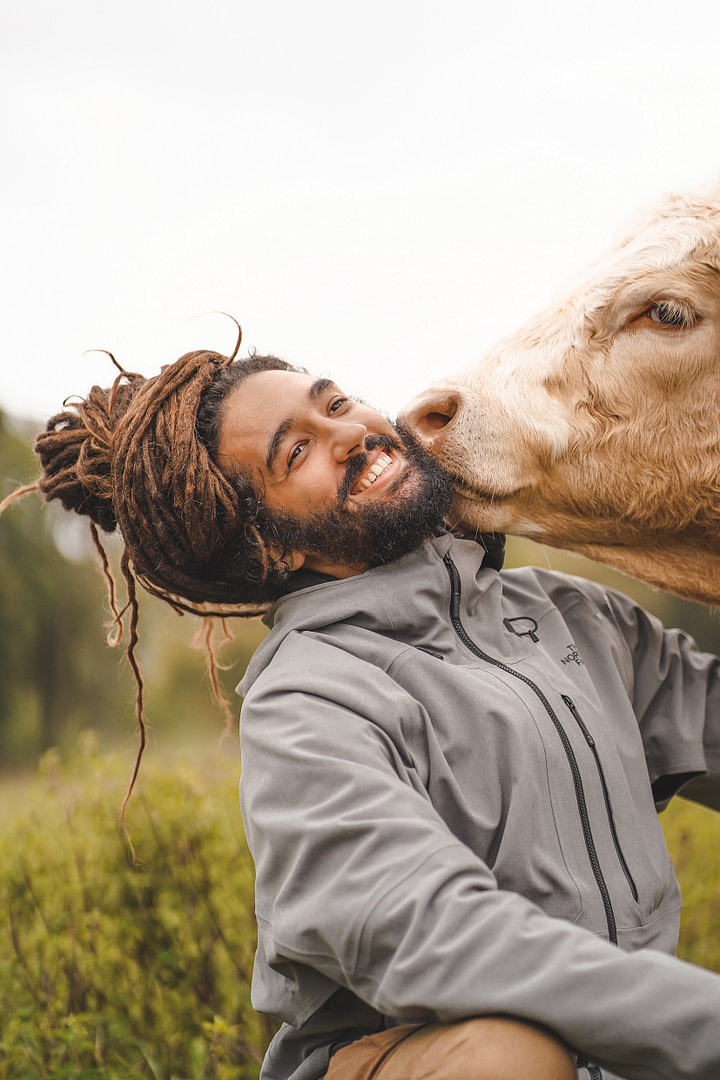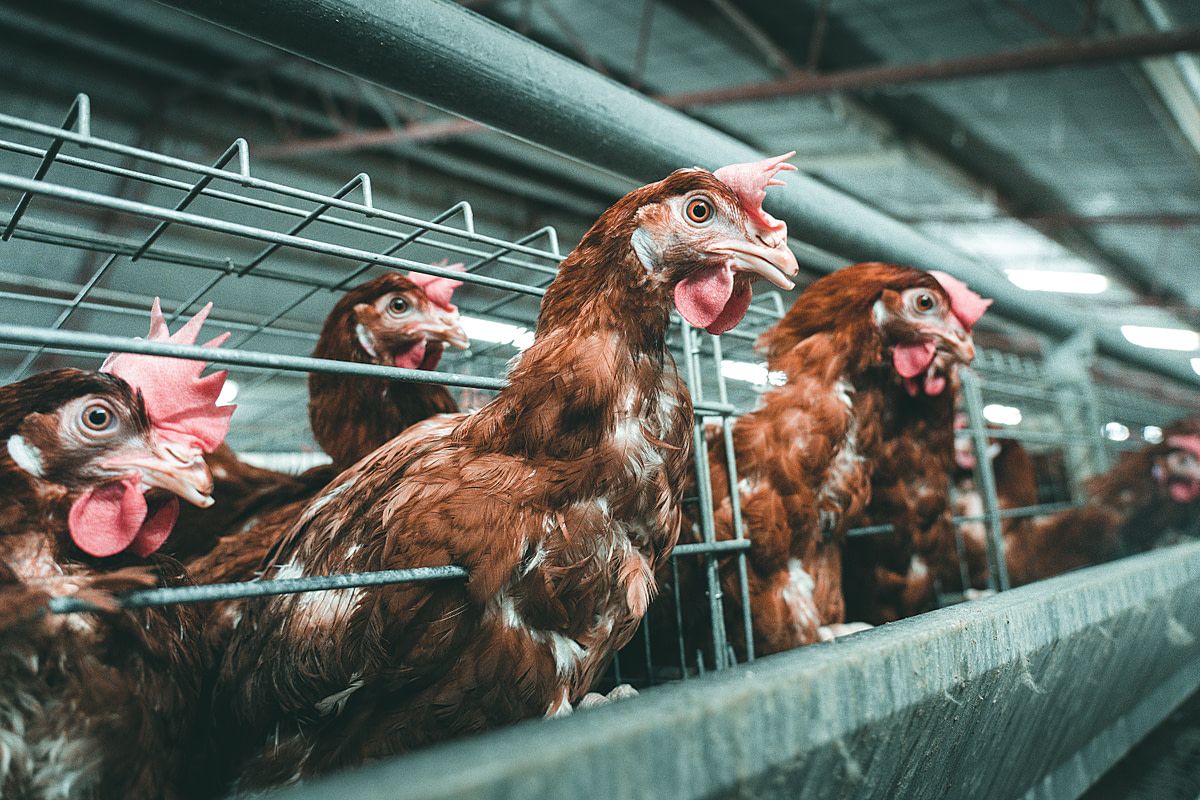Announcing The 2022 Animal Photojournalism Fellow
We have been delighted with the level of interest in the inaugural Animal Photojournalism Fellowship, and are inspired by the breadth and quality of work submitted since November’s call for applications. Submissions spanned 26 countries and came from photojournalists of diverse backgrounds and experience levels. From the 49 applicants were very strong contenders, with finalists based in Asia, Europe, and North and South America.
We are thrilled to announce that the 2022 Animal Photojournalism Fellowship has been awarded to Seb Alex. Throughout this year, We Animals Media will support Seb to cover a story about animals used for food, an underreported issue.

Photo Credit: Karma Photography Studio
Born and raised in Lebanon, Seb Alex moved to Europe in 2011 to pursue his career in Sustainable Architecture. Having worked with the UNHCR’s refugee program for a year, he then took the opportunity to enter the corporate world of architecture and work as an international project coordinator. A year after, he decided to leave his corporate life behind and dedicate all his time to what really speaks to his heart: animal rights advocacy. During the past few years he has focused on photography, using his camera to expose what animal agriculture industries try to hide from the public.
“Seb’s work stood out to us because of the high quality of his focus on difficult subject matter: the farming and slaughter of the animals we eat. Seb’s portfolio reveals a creative and compassionate human behind the lens, with a talent for finding the angles and lighting that will be most impactful for the viewer. There are so few people who do factory farming investigations extensively. It’s painful and arduous, and the conditions for shooting well are terrible. We offer Seb this inaugural Fellowship in support of his efforts to do more of this work, help him deepen his storytelling, and broaden his audience.” ― Jo-Anne McArthur
We spoke with Seb to find out more about his work and his upcoming project for We Animals Media’s Animal Photojournalism Fellowship.
[Content warning: contains graphic images]
We Animals Media (WAM): Tell us a little about your path to AR photography and investigations.
Seb Alex (SA): “I started animal rights photography the day I attended my first vigil at a pig slaughterhouse. This was the first time I ever saw a pig in person and I couldn’t help but immediately pull my phone and camera out to document what was going on. I was convinced that if friends and family members saw what I was witnessing and realised the importance of their daily choices, then they would consider making a change in their habits and the way they think of other animals.

Several egg-laying hens poke their necks out of the battery cages they are confined to at a chicken egg farm. Australia, 2019. Seb Alex / We Animals Media

A pig looks out through the opening of a transport truck. Poland, 2018. Seb Alex / We Animals Media
It didn’t take long before I extended that same type of documenting into farm investigations, as I realised there’s a reason why the industry is so secretive. It is up to us to expose the truth they try so hard to hide.”
WAM: Why did you want this fellowship? What do you hope to learn or improve upon?
SA: “I am always excited about becoming a better activist for animal rights, and there’s so much room for growth in every single one of us, especially when we team up with other activists who have more experience in certain fields. In this case, the opportunity of learning more and becoming a better photographer, a better storyteller, because in the end, that’s what we’re doing, we’re trying to take the story of each individual and show it to as many people as we can.”
WAM: Is there any particular image you’ve created that you think represents your work and what you’d like to communicate to the world particularly well? Tell us why.
SA: “I think it was around the fourth time I was documenting the slaughter of cows. There was one cow who fought really hard to not enter the slaughterhouse kill-floor. She did her best to not get tied up and when they finally managed to do it, using machines and chains, she looked straight at me with her eyes wide open. She knew what was coming and she was petrified. I cannot forget that moment and I believe the photo represents my work perfectly: the violence forced on sentient beings who value life, and fear pain and death, just like us.”

A terrified cow, restrained by machinery, is tied down at a slaughterhouse in Indonesia where she will have her throat slit. Indonesia, 2019. Seb Alex / We Animals Media
WAM: Who inspires your work? Do you have any top photography influences?
SA: “I have found a lot of value and inspiration from animal rights photography, especially from the We Animals Media team and social media pages.
Growing up in Lebanon, I developed a type of admiration for war photography and it is only now that I see the similarities between the two. My “favorite” photos from the Lebanese Civil War are ones where the horror of war and the normalisation of violence meet day-to-day life, such as the photo of Muslim Lebanese Army soldiers setting up a Christmas tree on the Green Line (that separated Beirut) to celebrate the holiday with Christian soldiers from the other side of the line, or the photo of a Lebanese Forces fighter playing backgammon with a kid, surrounded by destruction.
I believe this mix, in a way, portrays how our society is constantly surrounded by violence (in supermarkets, shopping malls, etc.) and continues acting as if nothing bad is happening.”

Muslim Lebanese Army soldiers set up a Christmas tree on the Green Line to celebrate the holiday with Christian soldiers on December 23, 1987. AFP Photo / Nabil Ismail

Lebanese Forces fighter playing backgammon with a child in the late 1980s. Photographer unknown.
WAM: A lot of this work is about suffering and dying. How does it affect you and how do you manage that?
SA: “When I’m documenting, I don’t really feel much. My job there is to document and leave so I’m able to block all emotions and feelings about what’s going on. This also helps me pay attention to what is happening and what is the best way to capture the moment to be able to show the truth. It is usually when I’m editing that the emotions start surfacing and with almost each photo and animal, I can remember what happened, how much they suffered and fought against it.

Photo Credit: Alden Daze

A calf lays on the bloody kill floor of a slaughterhouse in Indonesia and watches as another cow bleeds out just a few inches away. Indonesia, 2019. Seb Alex / We Animals Media
This is where the importance of self care and mental health priority comes in. We are in this for the long term because it is, unfortunately, a long battle, so we have to make sure that we can do as much as we can as activists. For this, I personally have a strict schedule of sleeping, waking up early (5:30-6:30am) to exercise, eat healthy and take ice baths (along with breathwork and meditation). This is what works for me and although I believe some of these habits can help everyone, I cannot say that self care and mental health support is a ‘’one size fits all.’’ Movement, good sleep and ice baths are my perfect recipe. I invite everyone to find their own, the animals need us at our best.”
WAM: What can you tell us about your proposed Fellowship project? What and where will you be shooting, and why is it important?
SA: “I will be concentrating mostly on farmed animals in Asia, with some potential work in Lebanon and Europe.
I believe that as animal rights activists we should be truthful and portray the reality of what is happening in different areas around the world. And as we fight for a more just world, we have to keep in mind that unfortunately, in a lot of areas and countries, the consumption of animal products is on the rise. This is a fact that we should not only pay attention to, but also make an effort in fighting. I hope that my work with We Animals Media will create a long term impact on this.”

Several piglets huddle on the floor of pig farm in Australia and go to sleep. Australia, 2019. Seb Alex / We Animals Media

A worker at a slaughterhouse in Indonesia puts a bucket under a pig’s corpse to collect the blood. Indonesia, 2019. Seb Alex / We Animals Media
Seb will work remotely with Jo-Anne McArthur over a series of meetings beginning in January 2022 for up to 10 months and will receive CAD$6,400 to cover project costs. Over the coming weeks, Jo-Anne and Seb will be developing the scope of the assignment – the animal industries Seb will shoot, their precise locations, and how to access them. We will make the details of the investigations public once the work is complete.
Subscribe to our newsletter or follow us on social media to stay updated about Seb’s Fellowship and to learn more about some of this year’s finalists.
More like this from We Animals Media:
We Animals Media Launches Animal Photojournalism Fellowship
by We Animals Media | Oct 18, 2021
In The Field: Moving Animals
by We Animals Media | Jan 28, 2021
Step into the World of Animal Photojournalism
by We Animals Media | Sep 14, 2019



